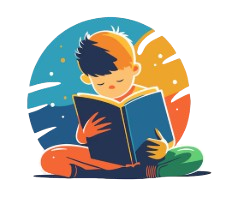From Choosing Your First Book to Developing a Reading Habit, A Beginner’s Guide to the Pleasure of Reading
Starting to read may be a really fulfilling activity that introduces you to new concepts, viewpoints, and worlds. But the huge universe of literature can be intimidating to newcomers. “Unlocking Literary Worlds: A Beginner’s Compass to the Joy of Reading – From Choosing Your First Book and Cultivating a Reading Habit to Deciphering Literary Devices and Embracing Diverse Genres, Discover How to Embark on a Transformative Journey Through the Written Word, Igniting a Lifelong Passion for Storytelling, Knowledge, and Self-Discovery, Transforming Your Mind into a Sanctuary of Imagination and a Fortress of Intellectual Curiosity,” is a thorough guide that will give you the tools and advice you need to read with confidence and zeal.
I. Setting the Stage: Choosing Your First Book and Cultivating a Reading Habit
- Start with Your Interests:
- Choose books that align with your hobbies, passions, and curiosities.
- This will make the reading experience more engaging and enjoyable.
- Consider genres like fantasy, science fiction, historical fiction, or non-fiction based on your interests.
- Begin with Shorter Books or Novellas:
- Don’t feel pressured to tackle lengthy novels right away.
- Start with shorter books or novellas to build your confidence and stamina.
- This allows you to experience the satisfaction of finishing a book without feeling overwhelmed.
- Explore Different Genres:
- Don’t limit yourself to one genre.
- Experiment with different types of books to discover what you enjoy.
- Try a mystery, a romance, a biography, or a self-help book.
- Find a Comfortable Reading Environment:
- Designate a quiet and comfortable space for reading.
- Eliminate distractions and create a relaxing atmosphere.
- This will help you to focus and immerse yourself in the book.
- Set Realistic Reading Goals:
- Start with small, achievable goals, such as reading for 15 minutes a day.
- Gradually increase your reading time as you become more comfortable.
- Consistency is key to building a sustainable reading habit.
II. Navigating the Text: Understanding Literary Devices and Techniques
- Pay Attention to Character Development:
- Observe how characters are introduced, developed, and changed throughout the story.
- Consider their motivations, relationships, and internal conflicts.
- Understanding characters enhances your connection to the story.
- Explore Plot and Setting:
- Analyze the sequence of events and how they contribute to the overall narrative.
- Pay attention to the setting and how it influences the characters and plot.
- Understanding the plot and setting deepens your understanding of the story.
- Decipher Literary Devices:
- Learn about common literary devices, such as metaphors, similes, symbolism, and foreshadowing.
- Understanding these devices enhances your appreciation for the author’s craft.
- Look for examples of these devices in the books you read.
- Develop Your Vocabulary:
- Keep a notebook or use a digital tool to record unfamiliar words.
- Look up their definitions and try to use them in your own writing or conversations.
- Expanding your vocabulary improves your comprehension and communication skills.
- Reflect and Discuss:
- Take time to reflect on what you’ve read and how it relates to your own life.
- Discuss the book with friends, family, or in a book club.
- Sharing your thoughts and interpretations can deepen your understanding and appreciation.
III. Embracing the Reading Journey: Tips for Continued Growth
- Don’t Be Afraid to Put a Book Down:
- If you’re not enjoying a book, don’t force yourself to finish it.
- There are countless other books waiting to be discovered.
- Life is too short to read books you don’t enjoy.
- Visit Libraries and Bookstores:
- Explore the vast selection of books available at libraries and bookstores.
- Browse different sections and discover new authors and genres.
- Librarians and booksellers can provide recommendations and guidance.
- Join a Book Club or Online Community:
- Connect with other readers and share your reading experiences.
- Discuss books, exchange recommendations, and learn from each other.
- Book clubs provide a sense of community and support.
- Listen to Audiobooks:
- Audiobooks are a great way to enjoy books while commuting, exercising, or doing chores.
- They can help you to discover new authors and genres.
- Narrators can bring stories to life with their voices and interpretations.
- Read Regularly:
- Make reading a regular part of your routine.
- Even short periods of reading can make a significant difference over time.
- Consistency is key to building a lifelong reading habit.
- Don’t Underestimate Re-reading:
- Re-reading a book can offer new insights and perspectives.
- You may notice details or themes that you missed the first time.
- Re-reading familiar stories can be comforting and enjoyable.
IV. The Enduring Impact: Transforming Your Life Through Reading
- Expand Your Worldview: Reading exposes you to different cultures, perspectives, and ideas.
- Enhance Your Creativity: Reading stimulates your imagination and inspires new ideas.
- Improve Your Communication Skills: Reading improves your vocabulary, grammar, and writing skills.
- Reduce Stress and Anxiety: Reading provides a calming escape from the stresses of daily life.
- Foster Lifelong Learning: Reading keeps your mind active and engaged, promoting cognitive health.
By following these tips and embracing the joy of reading, you can embark on a transformative journey through the written word, igniting a lifelong passion for storytelling, knowledge, and self-discovery.





Hi, this is a comment.
To get started with moderating, editing, and deleting comments, please visit the Comments screen in the dashboard.
Commenter avatars come from Gravatar.